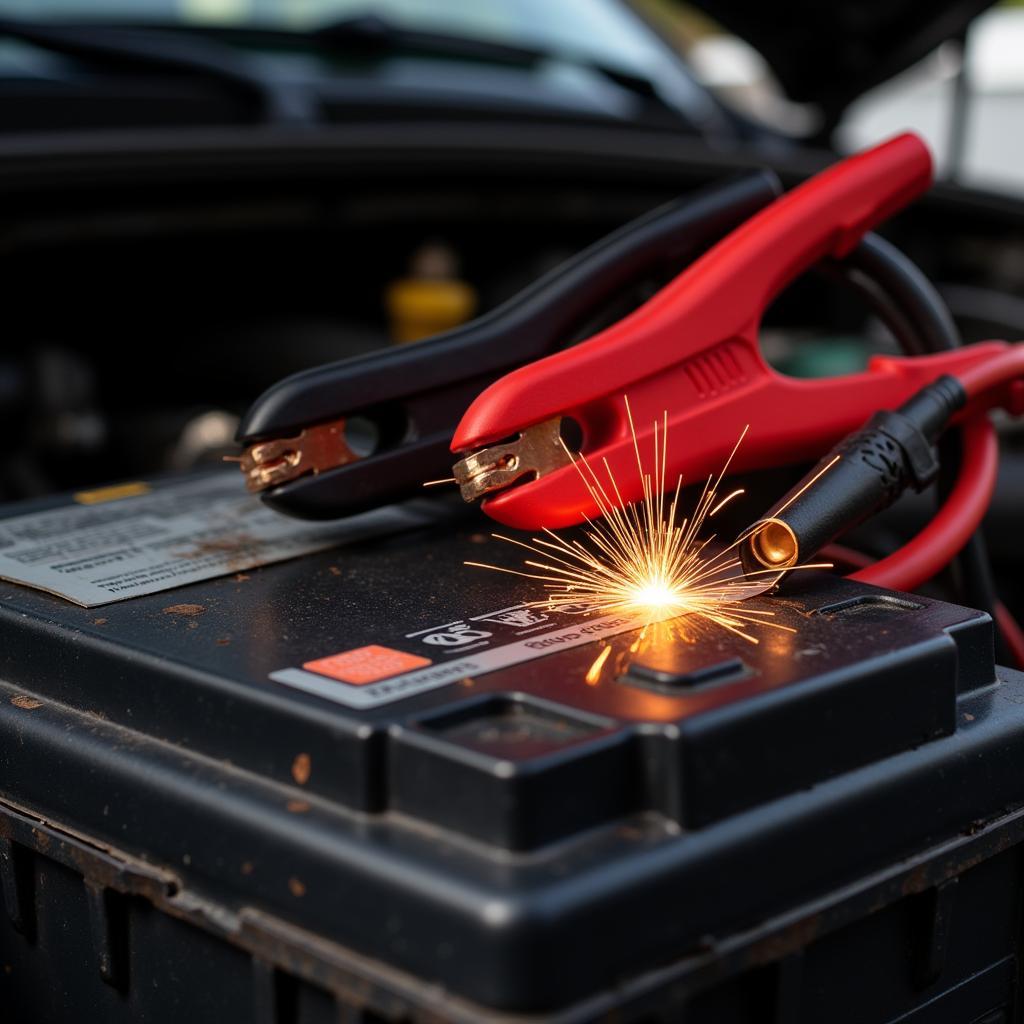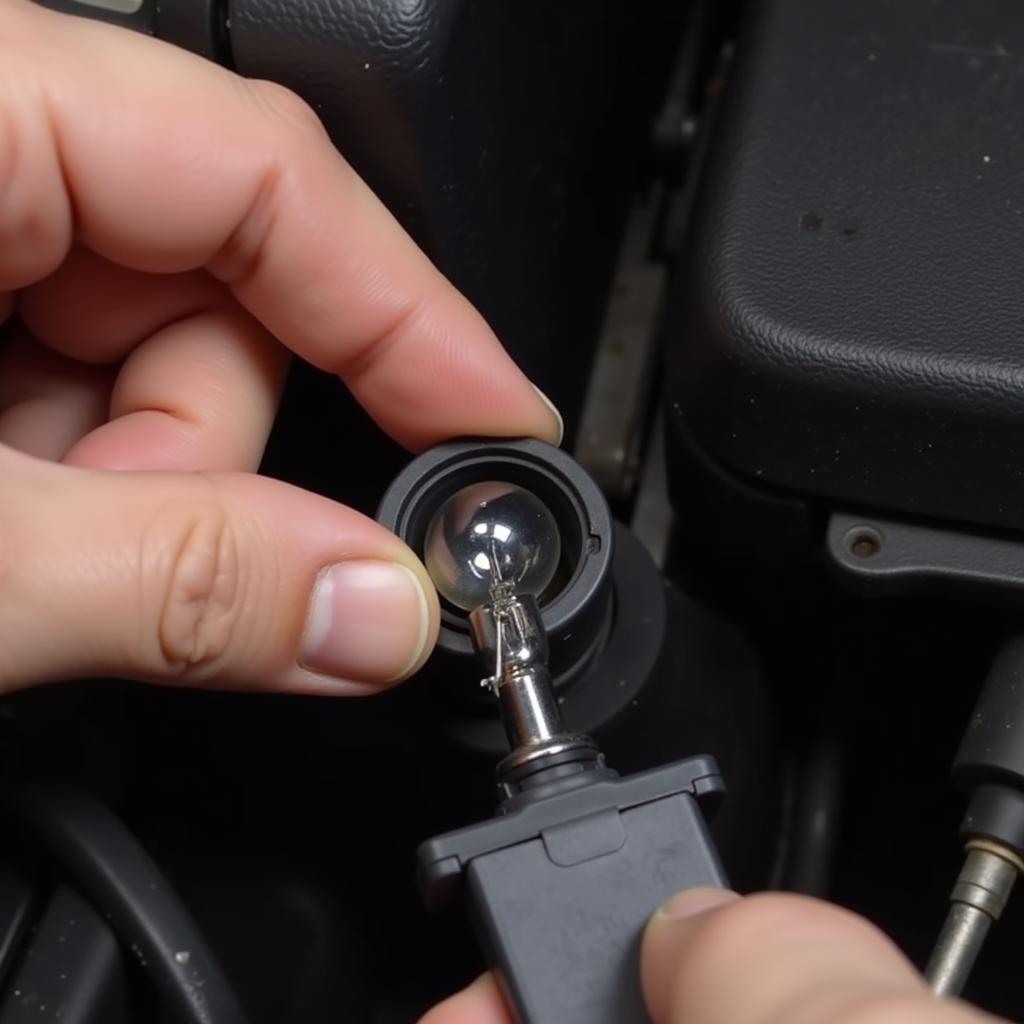A car battery losing charge fast is a frustratingly common problem. It can leave you stranded, late for work, or even facing a hefty repair bill. But don’t worry, this guide will help you diagnose the issue and get your car back on the road. We’ll cover everything from simple checks to more complex solutions, empowering you to tackle this problem head-on.
 Car battery rapidly losing charge
Car battery rapidly losing charge
Why is My Car Battery Losing Charge So Fast?
Several culprits can cause a car battery to drain quickly. Understanding the underlying causes is the first step towards finding a solution. Is your car battery losing charge overnight? Or does it happen even while driving? The timeframe helps pinpoint the issue. Let’s delve into the common reasons:
- Parasitic Drain: Even when your car is off, certain components continue to draw power, like the clock, radio memory, and alarm system. A faulty component or wiring can cause excessive drain, leading to a dead battery.
- Bad Alternator: The alternator recharges the battery while the engine is running. A failing alternator won’t provide sufficient charge, eventually depleting the battery. Are you noticing dimming headlights or flickering dashboard lights? Check if the battery light stays on. These are classic signs of dead battery vs dead alternator.
- Old Battery: Batteries have a limited lifespan, typically 3-5 years. As they age, their ability to hold a charge diminishes, resulting in frequent jump-starts and eventual failure.
- Extreme Temperatures: Both extreme heat and cold can stress a battery, reducing its capacity and lifespan. Cold weather, in particular, can thicken the battery acid, making it harder to start the engine and further draining the battery.
- Short Trips: Short trips don’t give the alternator enough time to fully recharge the battery after starting the engine. This can lead to a gradual decline in the battery’s charge over time.
- Corroded Terminals: Corrosion on the battery terminals can interfere with the electrical connection, preventing the alternator from charging the battery effectively. This is a simple fix, but often overlooked.
Diagnosing a Fast-Draining Car Battery
Now that we’ve identified the potential causes, let’s discuss how to diagnose the specific problem affecting your car. A multimeter is an invaluable tool for this task.
Testing for Parasitic Drain
- Turn off all lights and accessories.
- Disconnect the negative battery cable.
- Connect the multimeter (set to amps) in series between the negative battery cable and the negative battery terminal.
- Observe the reading. A small drain (less than 50 milliamps) is normal. A significantly higher reading indicates a parasitic drain.
- To pinpoint the source, remove fuses one at a time while observing the multimeter. A sudden drop in the reading indicates the circuit with the parasitic draw.
“Remember, even a seemingly small parasitic draw can drain your battery over time,” says John Miller, a seasoned automotive electrical engineer. “Regularly checking for parasitic drain can prevent unexpected breakdowns.”
Testing the Alternator
- Start the car and let it idle.
- Connect the multimeter (set to volts) to the battery terminals.
- A healthy alternator should output around 14 volts. A significantly lower reading suggests a failing alternator. For a comprehensive comparison between battery and alternator problems, refer to this resource on dead car battery vs alternator.
Solutions and Preventative Measures
Once you’ve diagnosed the problem, the next step is to implement the appropriate solution. Here are some common fixes and preventative measures:
- Cleaning Corroded Terminals: Clean the battery terminals with a wire brush and baking soda solution. This can significantly improve the electrical connection.
- Replacing the Battery: If your battery is old or damaged, replacement is the best option. Ensure you purchase the correct battery type and size for your car.
- Repairing or Replacing the Alternator: A failing alternator needs to be repaired or replaced. Consult a qualified mechanic for this task. Understanding the difference between a dead battery and a bad alternator is crucial, and this guide on signs of dead battery vs alternator can be extremely helpful.
- Limiting Short Trips: If possible, combine short trips or extend your driving time to allow the alternator to fully recharge the battery.
- Disconnecting Unused Accessories: Disconnect any accessories that you’re not using, such as GPS devices or phone chargers, to minimize parasitic drain.
- Using a Battery Tender: A battery tender can help maintain the charge of a battery that isn’t being used regularly, especially during long periods of storage.
Conclusion
A car battery losing charge fast can be a major inconvenience. However, by understanding the common causes, using simple diagnostic tools, and following the appropriate solutions, you can tackle this issue effectively. Regular maintenance, like cleaning the terminals and checking for parasitic drain, can prevent future problems and keep your car running smoothly. Don’t let a dead battery leave you stranded – take control and keep your car powered up! If you are unsure whether it’s your battery or alternator, consider this resource on dead battery vs alternator. It offers a detailed comparison to help you diagnose the problem accurately.


